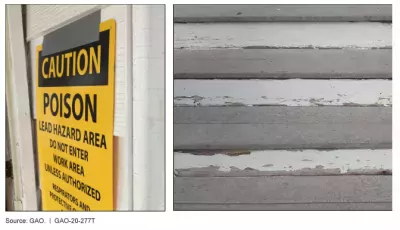Affordable Housing
The COVID-19 pandemic left many citizens without stable employment income. As a result, millions of U.S. homeowners and renters experienced challenges making mortgage and rental payments. To assist homeowners during this period of increased financial and housing instability, Congress and federal agencies placed a moratorium on foreclosures and residential evictions and provided borrowers with options to temporarily suspend their mortgage payments. Also, Congress appropriated $46.55 billion in emergency rental assistance to assist low-income renters and their landlords.
But the United States has had longstanding affordable housing issues. Following the 2007-2009 financial crisis, housing affordability in the United States worsened as homeownership declined and renting became more prevalent. To support affordable rental housing, federal agencies administer more than a dozen different programs that provide rental assistance payments, grants, loan guarantees, and tax incentives—such as the Department of Housing and Urban Development’s (HUD) Housing Choice Voucher. The government also supports homeownership by providing mortgage insurance, loan guarantees, direct loans for homeowners, and grants or loans for home repairs.
However, demand for affordable housing throughout the U.S. continues to outpace supply, and federal agencies—especially HUD—could improve their efforts to support affordable housing.
- Manufactured housing—prefabricated, factory-built homes—can be an affordable option for lower-income homebuyers. But some borrowers may not qualify for mortgages and might have to turn to other kinds of financing with less favorable rates and terms. Several federal agencies, including HUD, have created new or modified existing loan programs to help manufactured home borrowers. HUD has also taken some steps to improve the financing of manufactured housing but has not fully implemented several proposed changes.
- Many low-income renters face a shortage of affordable housing. The Housing Trust Fund program, which began in 2016, is designed to preserve and increase the supply of affordable housing units. HUD allocates program funds to states for affordable housing projects. However, it could improve its oversight of such projects and funds, including by collecting better data.
- HUD administers the Self-Help Homeownership Opportunity Program (SHOP), which is a competitive federal grant program that awards funds to eligible nonprofit organizations to help develop affordable housing units for purchase by low-income families. Buyers are expected to contribute "sweat equity" to the project by helping to build their own homes. However, HUD could make better-informed program decisions for this program. For example, market data shows that costs for some activities the grant can pay for have risen over time. But HUD has only changed the grant's per-unit spending limit twice. Using relevant data could help HUD determine if spending limits are keeping pace with costs.
- HUD enforces federal civil rights laws that require housing providers to make reasonable accommodations—such as providing entryway ramps—for households with disabilities. These requirements also apply to the housing providers that administer HUD's own rental assistance programs. However, although HUD collects information on a household's disability status, it does not systematically collect data on requests for reasonable accommodations for its 3 largest rental assistance programs.
- HUD is responsible for ensuring that housing units provided under its rental assistance programs are safe and sanitary. For its Project-Based Rental Assistance Program, HUD monitors lead paint risks through management reviews and periodic physical inspections. But HUD has not conducted a comprehensive risk assessment to identify properties posing the greatest risk to children under the age of 6.

- An experimental HUD program, the Moving to Work demonstration, gave 39 participating public housing agencies the flexibility to use HUD funding for purposes other than housing assistance—such as developing affordable housing, and imposing work requirements and time limits on tenants. However, HUD could take steps to more comprehensively capture and track data on households served by this program.
- Developers can apply for federal Low-Income Housing Tax Credits to help them build affordable housing projects. The amount of credit depends largely on project costs. However, project costs vary widely, and federal oversight of costs is limited. The Internal Revenue Service and the Treasury should use data on variables that affect cost—such as square footage and building type—to better monitor this tax credit.
- USDA’s Rural Housing Service (RHS) provides mortgages to support affordable rental units for low-income tenants through its Rural Rental Housing Program. When these mortgages reach the end of their terms (mature), property owners may exit the program—and current law does not allow RHS to continue providing rental assistance when this occurs. As a result, tenants in properties with mortgages that are maturing may face rent increases or lose their housing altogether. Congress should consider granting RHS the authority to continue providing rental assistance to tenants in properties with maturing mortgages.

Recent Reports
Affordable Housing: Information on the Self-Help Homeownership Opportunity Program


